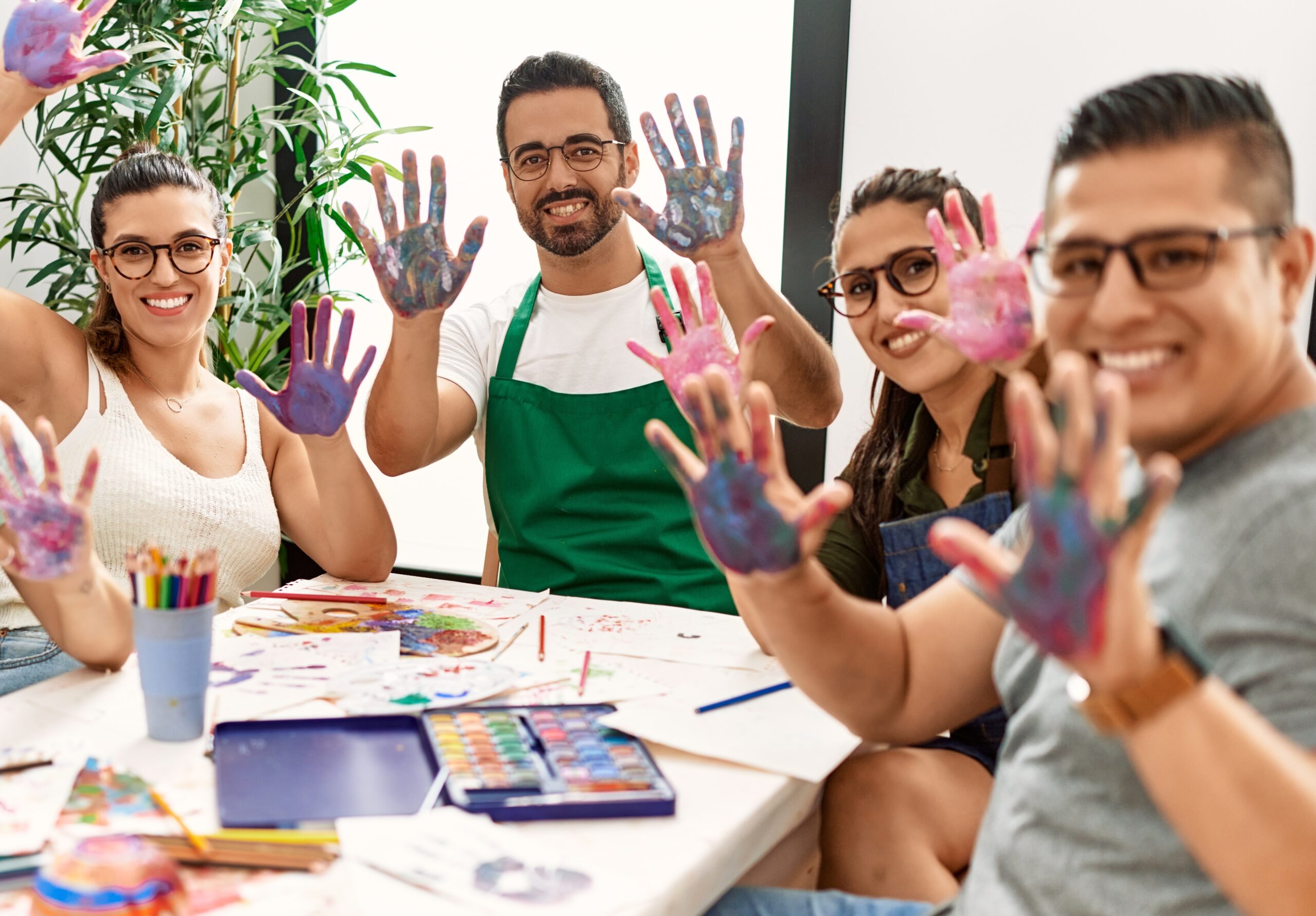“Art is who we are. It facilitates self-realization in everyone.” ~ contemporary artist Philippe Benichou
When was the last time you picked up a pencil, ink pen, marker, or paintbrush? You don’t need to be a professional artist to enjoy the benefits of creativity—just open yourself up to the process. Art can help you explore your emotions, reflect on your experiences, and regain a sense of peace amid life’s challenges. If you need a little help getting started, this post provides five easy art exercises you can use to begin your creative journey.
5 Art Exercises to Support Your Mental Health
- Use Automatic Drawing to Help You Express What Words Can’t
Mental health conditions like depression and anxiety can make you feel like you’re carrying a weight that’s impossible to explain, but giving those feelings form on paper can provide a sense of relief. One particularly helpful technique is automatic drawing—a method where you put pencil to paper without any specific plan and just let your hand move.
In automatic drawing, the lines and shapes you create will start to reflect the emotions you’re feeling. If you’re feeling tense or angry, the strokes might be harsh and jagged. If you’re feeling overwhelmed or lost, they may come out as swirling spirals or chaotic lines. (Check out the Creative Mind Class website to learn more about how a professional illustrator uses automatic drawing to enhance her creative process.)
- Color Mandalas to Practice Mindfulness
Art is a powerful vehicle for practicing mindfulness, especially if you struggle with racing thoughts, constant worry, or burnout. Mindfulness involves focusing fully on the present moment, and creating art naturally lends itself to this practice.
One way to practice this is through mandala coloring. Mandalas, which are intricate geometric designs, have been used in various cultures for meditation. When you color a mandala, the repetition of patterns draws your focus, allowing you to engage with the task fully and let go of distractions. You can use colored pencils, markers, or even digital tools to fill in these designs slowly and mindfully. (Download free images from Super Coloring to help you get started.)
- Build Self-Acceptance and Self-Worth With Self-Portraiture
Mental health challenges often lead to negative self-talk and a distorted sense of self-worth. Your condition might be making you feel like you’re not good enough, capable, or valuable.
Self-portraiture can help you revamp your self-image. Contrary to popular belief, you don’t need to be a skilled artist to create a self-portrait—the value lies in how you interpret yourself, not in the accuracy of the depiction. By drawing or painting yourself, you can explore how you see yourself and perhaps even start to soften critical thoughts as you appreciate the uniqueness of your own image. (The Art Web blog has tips to help you get started, as well as an interesting look at the role of self-portraiture in art history.)
- Visual Journaling Provides Opportunities for Daily Reflection
Much like writing in a journal, visual journaling provides a way to reflect on your experiences, emotions, and thoughts. Instead of writing, though, you express yourself through sketches, paintings, or mixed media. It’s less about producing a masterpiece and more about recording your thoughts in a way that helps you understand them better—including feelings related to past trauma.
You can try collaging as part of your visual journaling practice. Grab old magazines, newspapers, or printouts, and start cutting out images, words, or colors that resonate with your current state of mind. Glue these onto the pages of a journal, mixing them with your own doodles or paint. The result is a snapshot of your emotional and mental state that doesn’t rely on structured language to be understood.
- Finger Paint to Find a Sense of Joy
Living with mental health struggles can sometimes make it hard to experience joy. Art, however, can tap into your sense of playfulness and creativity in a way that brings lightness back into your life. You don’t need to approach art with seriousness or an end goal in mind. In fact, allowing yourself to create just for the sake of having fun can be a powerful act of self-care.
Finger painting is a perfect way to tap into this sense of playful, carefree creativity. You probably haven’t done it since you were in elementary school, but the sensory experience of dipping your fingers into paint and smearing it onto a canvas or piece of paper can feel liberating—especially when you let go of perfectionism and focus purely on enjoying the moment.
We’re Here to Help
Although artistic pursuits can help you reconnect with yourself, manage difficult emotions, and find moments of peace, they’re not a substitute for professional mental health treatment. If you’re struggling to manage your mental health despite making lifestyle changes at home, the team at Eagle View Behavioral Health in Bettendorf, Iowa, can help. Reach out to our admissions office today for more information or to schedule a free, confidential assessment.






